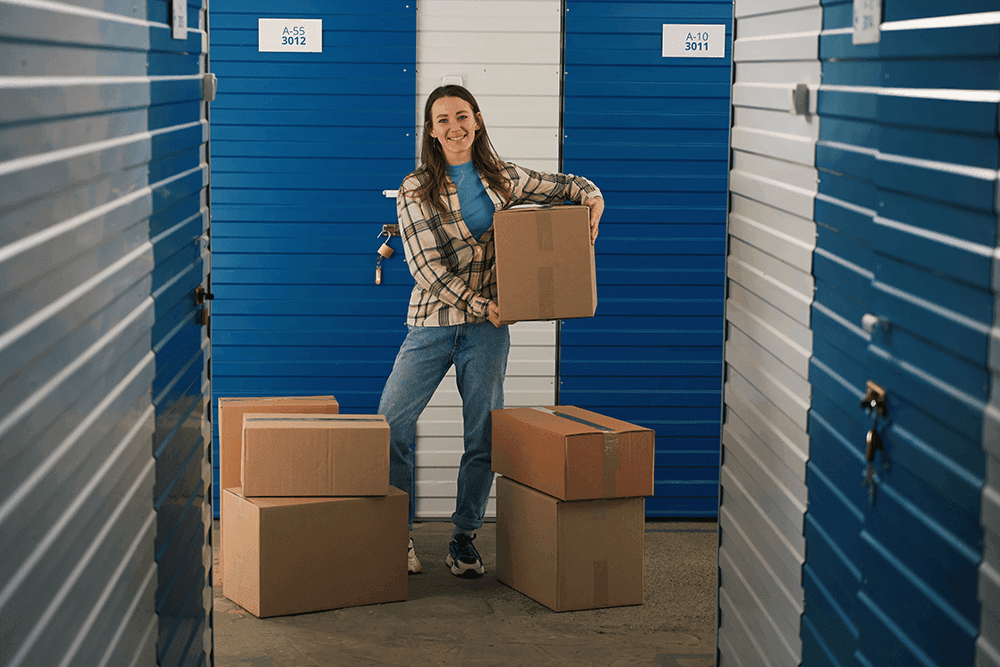
 Home
HomePower Outage Survival Guide: What to Do When the Lights Go Out in a Snowstorm
In 1895, genius Nicolas Tesla designed the first hydroelectric power plant to operate in America, located at Niagara Falls. By 1896, the plant's electrical output was used to power the entire city of Buffalo, New York. Tesla ushered in AC power, which has become a foundation stone of modern life.
If you want to directly experience what electricity means to you, take a power-fast for a single day when you are not working, and make it a family affair. Plan all the things you can do without electricity. If you have kids, expect them to go stir-crazy when their phone does not work. Losing power for a single day is harder to deal with than it sounds.
Grid Down Preparation
Given that electrical power is very important to all, it is a wise strategy to make good plans about what to do if there is a power outage.
Outages can be caused by severe weather, natural disasters, terrorism, and cyber-attacks. When an impact affects a large area, it is called a grid-down emergency. Tornadoes and hurricanes can knock out power lines. Earthquakes and floods can damage grid infrastructure. Wildfires can be caused by sparks from shorted-out power lines and can burn up power lines. Modern warfare may now include direct attacks on the power grid.
No matter the cause, you want to be able to handle any emergency, even if there is no power.
Here are the top ten issues, which include concerns for wintertime. You can use it as a guide and a checklist of what you can do to ensure you and your family are safe if the power goes out.
Here are the topics covered in this guide:
- Essential Items to Include in Your Winter Emergency Kit
- How to Stay Warm Indoors Without Electricity
- Safe Alternatives for Lighting Your Home During a Power Outage
- Maintaining Communication: How to Keep Your Phone Charged
- Food Safety: What to Eat and How to Store It Without Power
- How to Prevent Frozen Pipes During a Power Outage
- Staying Informed: Best Ways to Get News and Weather Updates
- Emergency Heating Options: What's Safe and What's Not
- Caring for Pets During a Winter Power Outage
- First Aid Essentials: Handling Minor Injuries Without Power
1. Essential Items to Include in Your Winter Emergency Kit
Winter is harsh, and an emergency kit that includes everything needed for winter is good all year long. If you don't need to build a fire for warmth, you can still make a campfire and let the kids roast hot dogs or marshmallows on a stick.
The main concern for an emergency kit is safety, so pay careful attention to things you use that require electricity to sustain your health. For example, if you use any medical equipment that requires power, you must be able to keep it running should the power go out.
Here is a list of things to have in your winter emergency kit. If you don't want to go to the trouble to find all the individual items, you can shop online for emergency survival kits that have the essentials you need.
- Cash, including many small bills
- Blankets or sleeping bags
- Can opener (manual)
- Cell phone with chargers (solar, car, or battery)
- Dust masks
- Extra clothing, hats, gloves, and sturdy shoes
- Fire extinguisher
- First aid kit
- Flashlights with extra batteries
- Local maps (paper maps)
- Medications (7-day supply)
- Moist towelettes, garbage bags, and plastic ties
- Multipurpose tool (e.g., Swiss Army knife)
- Non-perishable food (canned or dried)
- Water (at least 1 gallon per person per day for a week)
- Whistle
- Wrench or pliers to turn off utilities
- Important documents (copies in waterproof container)
- Baby supplies (if needed)
- Pet supplies (if needed)
2. How to Stay Warm Indoors Without Electricity
When you're stuck without power in the dead of winter, layer up like it's the Arctic. Throw on as many clothes as you can, especially thermal stuff, if you've got it. Wrap yourself up in blankets and use a sleeping bag to trap body heat. Shut doors tight and stuff towels or blankets under them to keep the cold out. If you can light candles safely, do it – but watch out for fires!
Stay active to keep your blood pumping and generate heat. Get your hands on hot drinks and eat warm food cause calories and warm liquids help keep your core temp up. Grab a hot water bottle or wrap some warm rocks in a towel and tuck them close. Stick close together with your crew, if possible, cause sharing body heat is self-defense when it's freezing indoors.
In cold temperatures, keep an eye on each other for signs of hypothermia like shivering, feeling sleepy, or becoming confused. If things get sketchy as an outage drags on, think about finding a shelter with power. Just remember, staying dry is vital because wet clothes pull heat right out of your body. And never, ever bring grills or camp stoves inside – that's a fast ticket to carbon monoxide poisoning and death.
3. Safe Alternatives for Lighting Your Home During a Power Outage
When navigating a power outage, it is essential to prioritize safe lighting alternatives to mitigate fire hazards and avoid exposure to carbon monoxide.
Opt for reliable flashlights equipped with fresh batteries strategically placed throughout your home. LED lanterns offer an efficient and long-lasting lighting option that minimizes risk, especially compared to traditional candles, which can pose fire risks and present safety concerns.
Battery-operated lights, such as string lights or puck lights, provide adequate illumination for navigating indoor spaces safely without the hazards associated with open flames.
4. Maintaining Communication: How to Keep Your Phone Charged
In an emergency, communication is vital. Here are some ways to keep a phone charged for longer during a power outage:
- Conserve phone battery by minimizing usage and disabling non-essential features.
- Use a battery-operated charger designed for emergencies.
- Utilize car chargers to charge phones.
- Consider hand-crank chargers as a manual charging option.
- Keep fully charged portable power banks on hand for recharging phones multiple times.
- Invest in solar-powered chargers to harness sunlight for phone charging.
5. Food Safety: What to Eat and How to Store It Without Power
If a refrigerator goes down during winter, putting things outside in the cold is a good substitute. Be sure the items are in a durable plastic container that seals properly, with a little room left for expansion when the contents freeze. Protect anything you leave outside from wild animals.
Consume perishable foods from the refrigerator first to minimize waste and avoid spoilage. Use perishable items like milk, cheese, and yogurt early on. Use coolers with ice packs or bags of ice to temporarily store perishable items like dairy, meat, and leftovers from the refrigerator.
For storing foods in the freezer, if you do not want to move them outside, keep the freezer door closed as much as possible to maintain the cold temperature. Frozen foods can typically stay safe for up to 48 hours if the freezer remains closed.
Have emergency food supplies on hand that require minimal preparation, such as ready-to-eat meals, peanut butter, crackers, and dried fruits. Opt for non-perishable foods such as canned goods, freeze-dried meals, nuts, and granola bars that don't require refrigeration.
6. How to Prevent Frozen Pipes During a Power Outage
It is a nightmare clean-up job when a pipe breaks from water freezing in the pipe. If this happens, find the main water valve to shut off the entire water supply and then make the repairs needed.
To prevent this from happening, ensure pipes are properly insulated, especially in unheated or exposed areas such as attics, basements, and crawl spaces. Allow faucets connected to vulnerable pipes (especially those along exterior walls) to drip slowly. This continuous flow of water can prevent freezing by relieving pressure buildup.
Keep interior temperatures above freezing. Open cabinet doors under sinks to allow warm air to circulate around pipes, especially in bathrooms and kitchens located on exterior walls.
Disconnect and drain outdoor hoses and faucets to prevent water from freezing and damaging pipes.
7. Staying Informed: Best Ways to Get News and Weather Updates
If you are in a SHTF scenario, use a hand-cranked emergency radio (that also runs on batteries and solar) to monitor news, weather updates, and emergency broadcast announcements.
8. Emergency Heating Options: What's Safe and What's Not
There are safe ways to stay warm and unsafe ways to avoid.
Here are some safe options:
Lighting a fire in the fireplace, and bundling up in front of it, is the time-tested, old-school method for staying warm. Be careful you do not get too close to the fire, especially if you fall asleep. Use a metal fire screen placed in front of the fireplace. Burning wood can pop and throw hot embers a good distance if not blocked by a fire screen.
Cooking soup in a big open pot or simply boiling water on the stove will help heat up the room. You can soak your feet in a pot of warm water. Then, dry them off well and put on many layers of clean socks. This is fun for kids.
Running a generator that is properly and safely installed outside may provide power for energy-efficient electrical space heaters.
These are things to avoid that are UNSAFE:
Don't use any propane camping stoves or gas-powered grills indoors because they will fill the room with carbon monoxide. That is an odorless, colorless, poisonous gas.
Anything with an open flame is a dangerous fire hazard. Kerosene heaters are dangerous both for their flame and the creation of carbon monoxide.
9. Caring for Pets During a Winter Power Outage
Have an emergency kit with enough food, water, and medications, for at least a week. Ensure pets have a warm safe place to stay and put on pet clothes (which can be an old t-shirt) and pet sweaters. Give them extra blankets. Take dogs out frequently to do their business. Encourage them to be quick about it and bring them back in rapidly to avoid excessive cold. Warm their foot pads with a dry towel after bringing them back inside.
For other type of pets, you need to ensure the proper temperature. For example, with fish aquariums and reptile habitats, you need to check the temperature with a thermometer and use a battery-powered tank heater or heat lamp and blankets around the tank to keep the living area from getting too cold.
10. First Aid Essentials: Handling Minor Injuries Without Power
Part of your emergency kit includes having a first aid kit. Minor injuries include cuts, scrapes, burns, sprains, strains, insect bites, insect stings, splinters, blisters, and eye irritations. Take the time to learn about first aid procedures from free online instructional courses before disaster hits so you are well-prepared.
If you can handle these ten challenges, you will be fine. Also, make sure anything you put in self-storage is in a climate-controlled facility. Use the convenient self-storage locator to find the nearest one.




